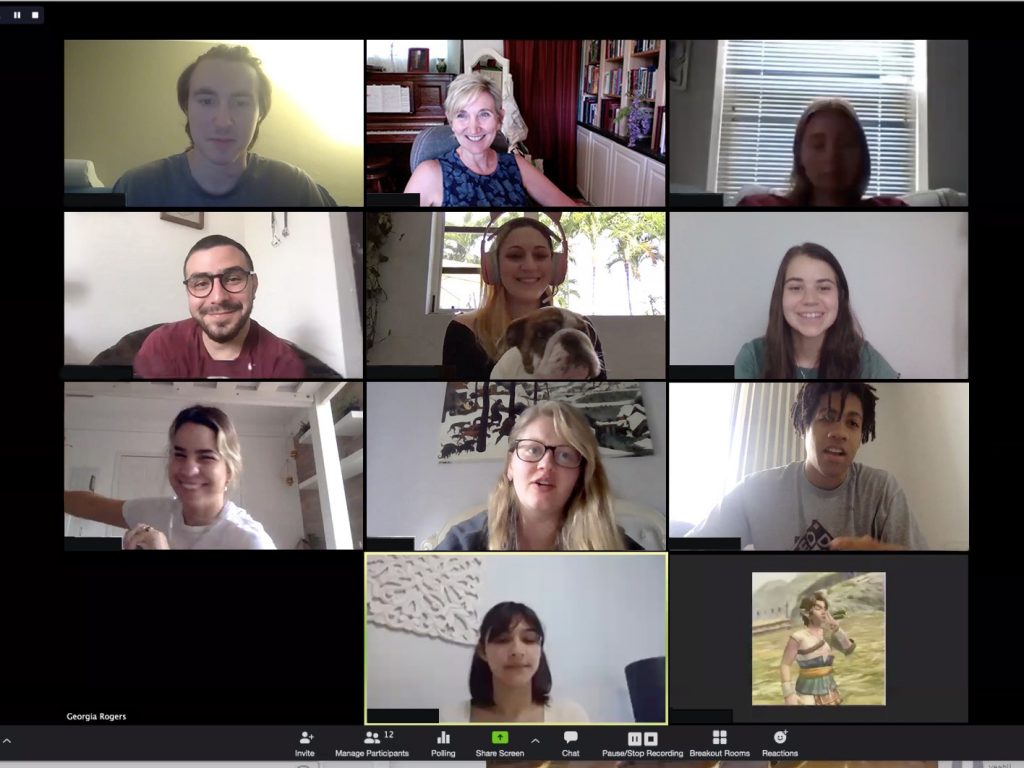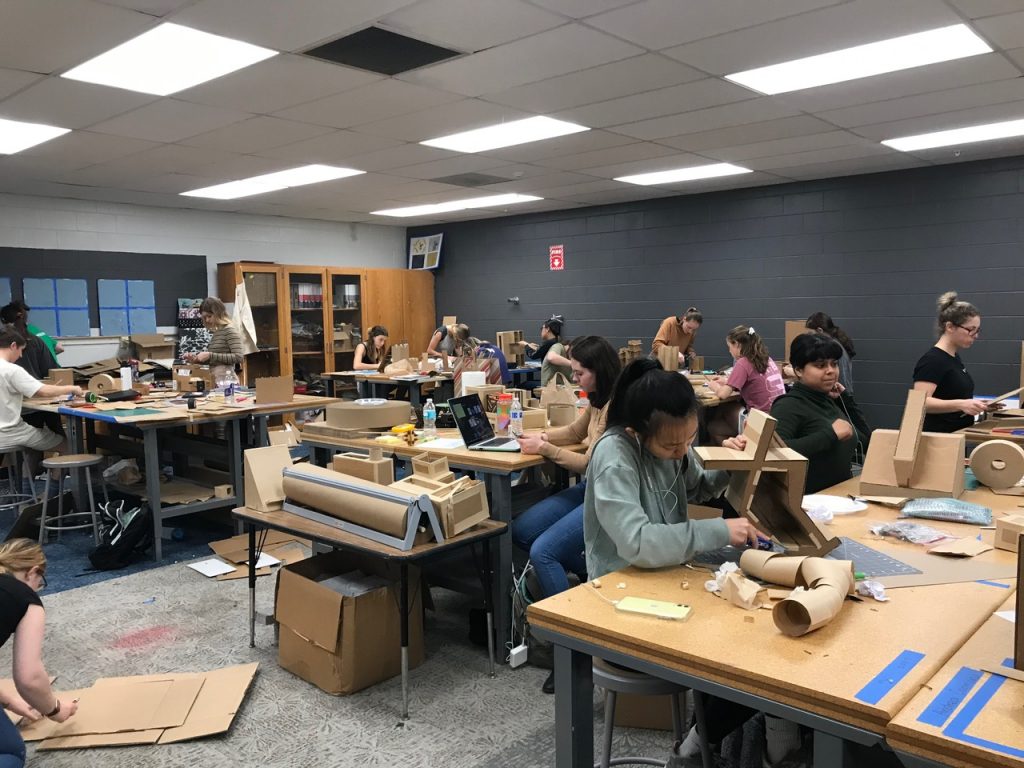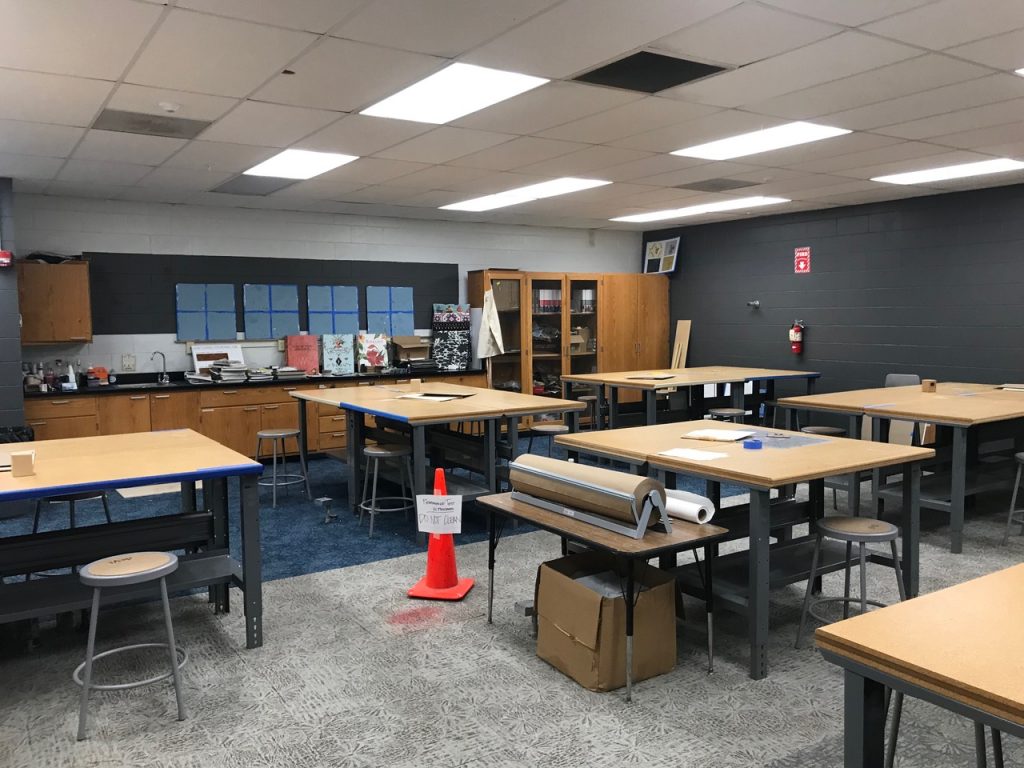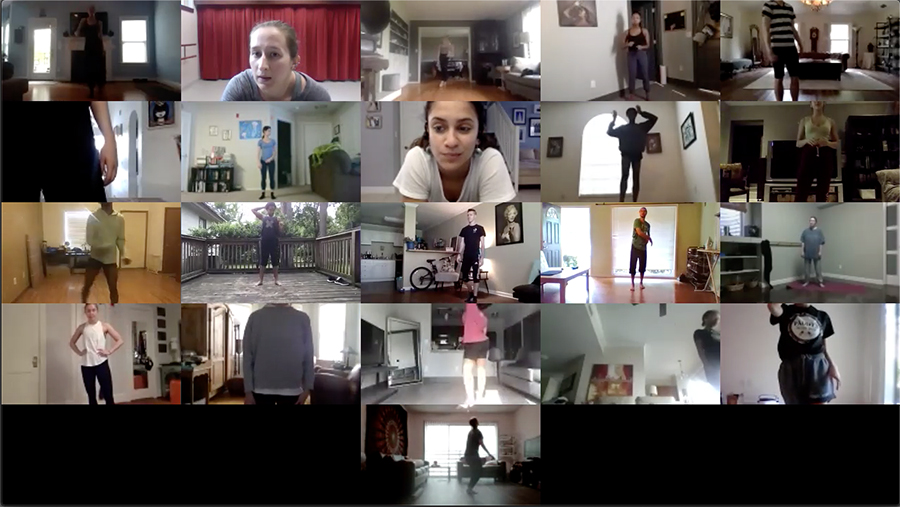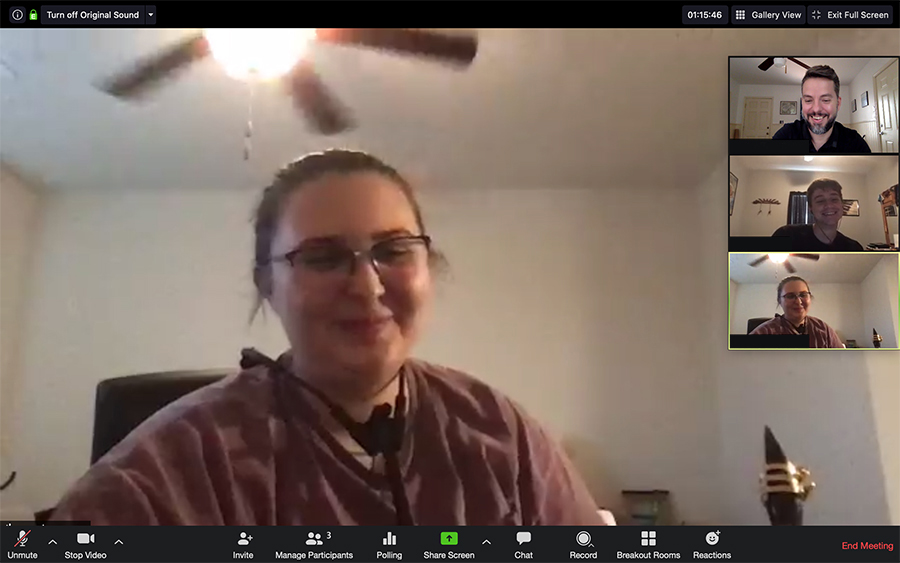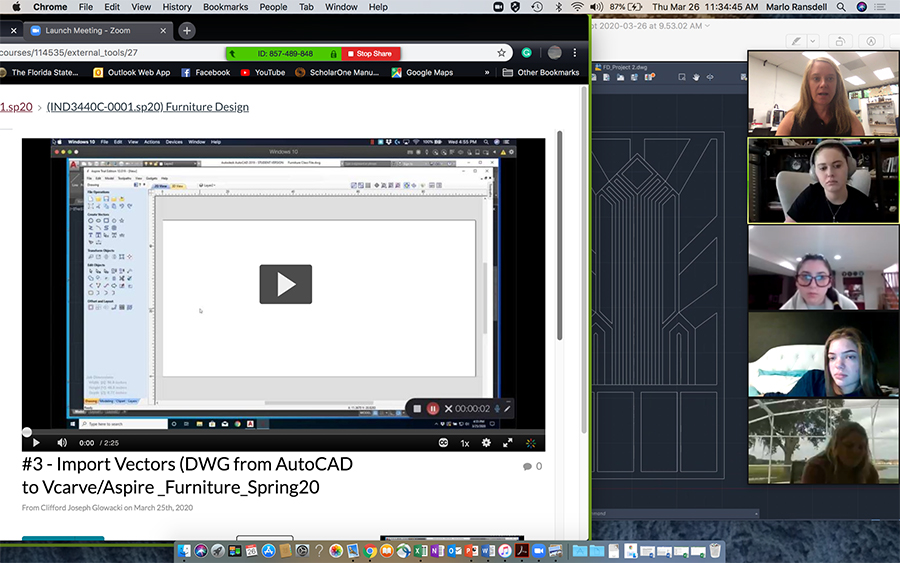
Whether they’re teaching studio art, dance, music or interior architecture and design, Florida State University faculty in the creative disciplines are facing some unique challenges during the COVID-19 pandemic.
When FSU moved to remote learning on March 23, it made most faculty across campus completely rethink their lesson plans. That’s especially true for the arts, where many faculty are reimagining how they normally communicate and teach the best practices of the creative process.
But despite these changes, both faculty and students in the arts are inspired and motivated to pave the way for future generations of students in this new era of learning.
Jean Hudson, an instructional specialist and media center curator in the Department of Art History, said that she and others are using this experience to enhance their skills and look to the future of technology and teaching remotely.
“Everyday life often got in the way of learning new technologies, even these great resources that are right at our fingertips,” Hudson said. “Though we were all forced to learn them quickly, we have made enormous strides in our collective knowledge just in the past two weeks.”
Now, the faculty are taking advantage of Zoom and Kaltura, which have become crucial tools for remote learning across the country during this crisis. For many faculty and students, this is the first time they’ve had to use these tools.
This semester, FSU’s Department of Art sculpture students and Professor Carolyn Henne are collaborating virtually with Sandra Brooke, a coral ecologist at the FSU Coastal and Marine Laboratory, to build a coral reefscape on the grounds of the facility.
The reefscape will serve as an educational tool to physically show and demonstrate the nature of a living coral reef. It will feature signs with digital barcodes that link to websites with information to educate the public about the impacts to coral reefs, from natural causes and human activities.
To complete the project, Henne had to alter plans for the semester and ensure her students have the proper materials.
“We have a system where students let me know what supplies they need,” Henne said. “I then put together packages and leave them at my front gate to make sure we comply with social distancing procedures. Once projects are complete, I will collect all the pieces from the students and the reef will be built by me, Dr. Brooke and the lab staff.”
Associate Professor Marlo Ransdell from the Department of Interior Architecture and Design teaches an undergraduate course focusing on materials, joinery and the process of making furniture models and prototypes using digital fabrication software (CAD and Vcarve Pro) and equipment (Co2 laser and CNC router).
While learning at a distance, students don’t have access to the machines and materials to create physical models of their designs. However, by using AutoCAD and a free trial of Vcarve Pro software, students can still digitally animate their furniture designs.
“We will not be making any physical models, but the digital modeling of the manufacturing process helps maintain the goals of the project and the objectives of the course,” Ransdell said.
The class will then share their animations in four- or five-person critiques on Zoom.
“This helps students understand how their CAD drawings are translated into the manufacturing process for the CNC router,” she said. “Even though they cannot interact with the machine, they can see the way it would work and understand the basic concepts of fabrication.”
Geoff Deibel, an assistant professor of saxophone from the College of Music, said it’s disappointing that culminating, end-of-year performances are now impossible and that they can’t play together in person.
It’s not ideal, but he and his students are making it work.
Deibel has his students making, editing and posting videos to YouTube. They will create remote recording projects that the students will then multi-track and post, and he’s encouraging students to collaborate with other musicians on new projects.
“There is a challenge with technology and teaching music online due to the difficulty level of hearing the fine details in music using the livestream technology we currently have,” Deibel said. “The quality of recorded sound, rather than live-streamed sound, is much better and allows for more specific comments and criticism.”
Rachel Hunter, an adjunct faculty and production manager in the School of Dance, believes the hurdles give students and faculty the chance to innovate.
“Historically, dancers have adapted through different crises, including pandemics, war and natural disasters,” Hunter said. “I want my students to feel empowered to use what they already know to seek new methods and ways to train. We can acknowledge the current environments we find ourselves in, but also look forward to when socially distancing is no longer necessary.”
Hunter said that while remote dance classes are a bit awkward, she enjoys seeing her students. After their first remote movement class earlier this week, Hunter received emails and messages from students who said that they loved moving again.
“They are adapting to the new platforms really well,” she said. “I’m learning the technology with them as we go, so I also appreciate their support and feedback in what works and what doesn’t.”
She also sees this time as an opportunity for the entire arts community.
“I want to encourage students to continue making work, continue to rely on the art form and rely on their own voice to help navigate through all of this,” Hunter said. “We have a chance to document and share an immense amount of art and knowledge.”





